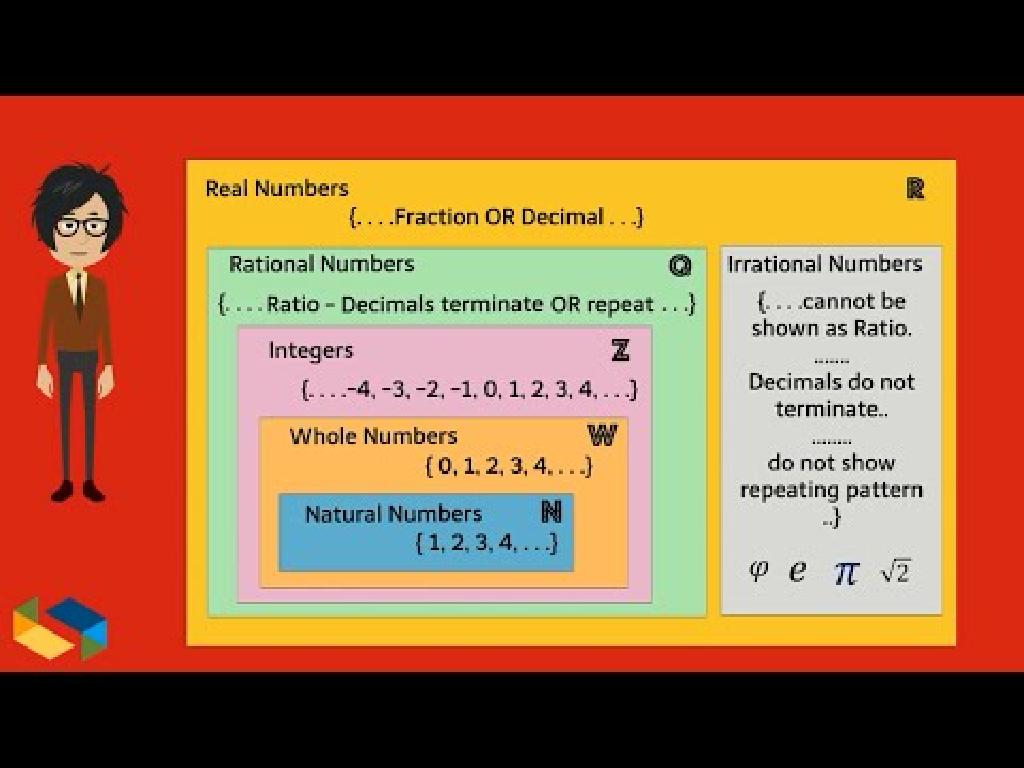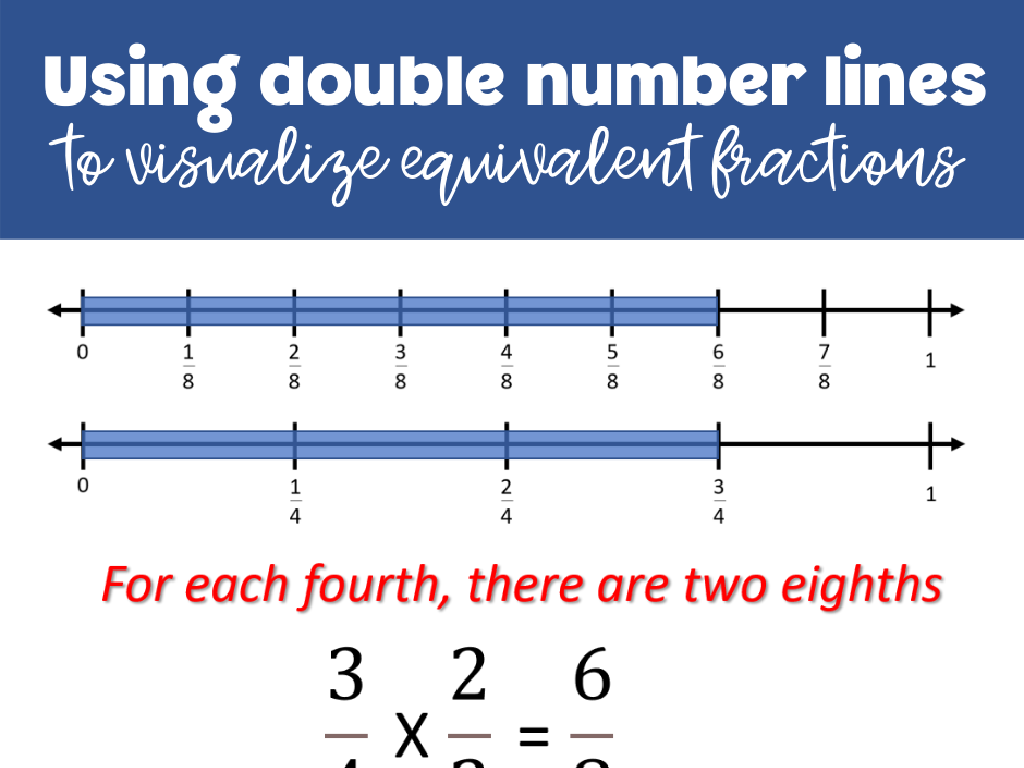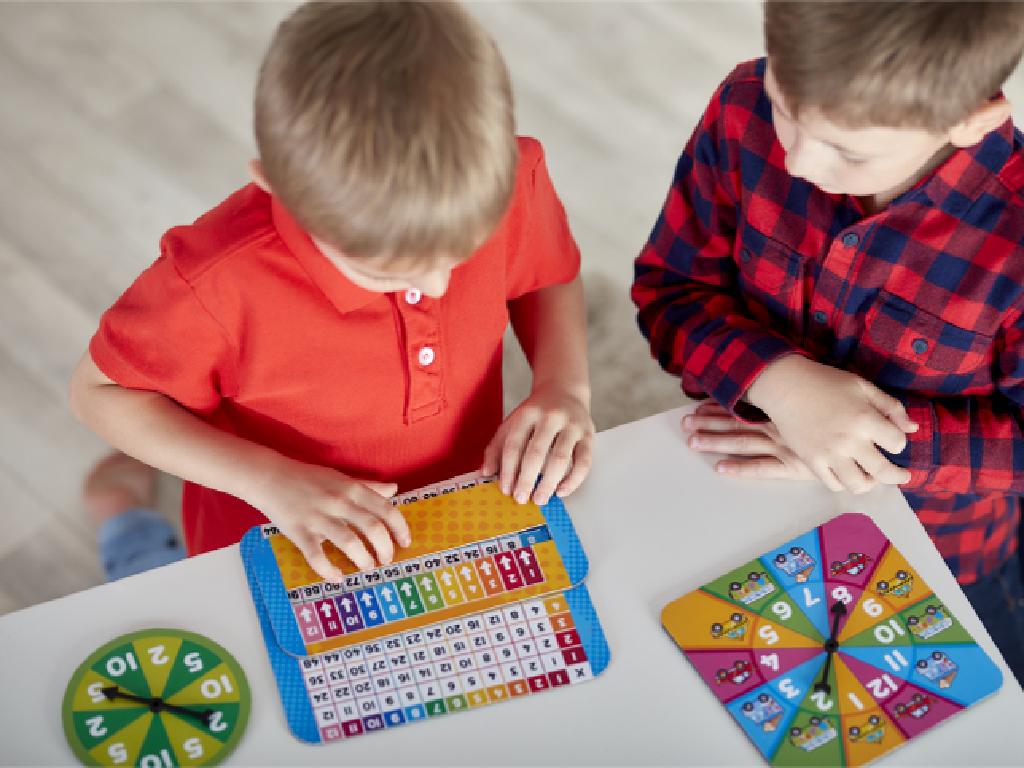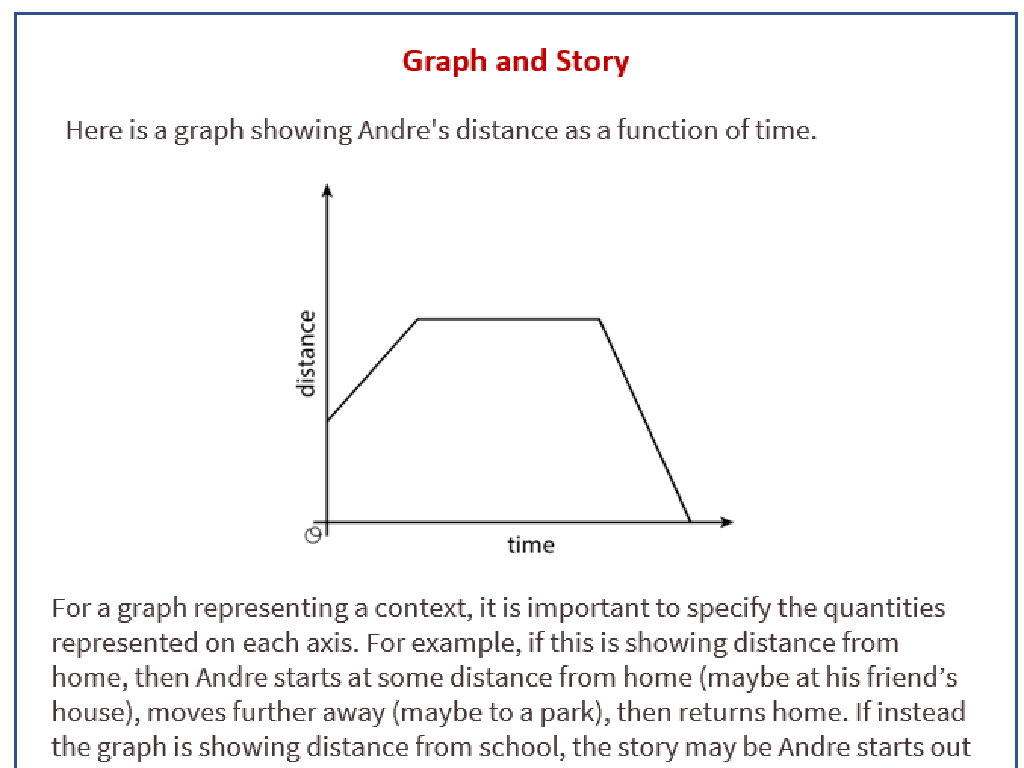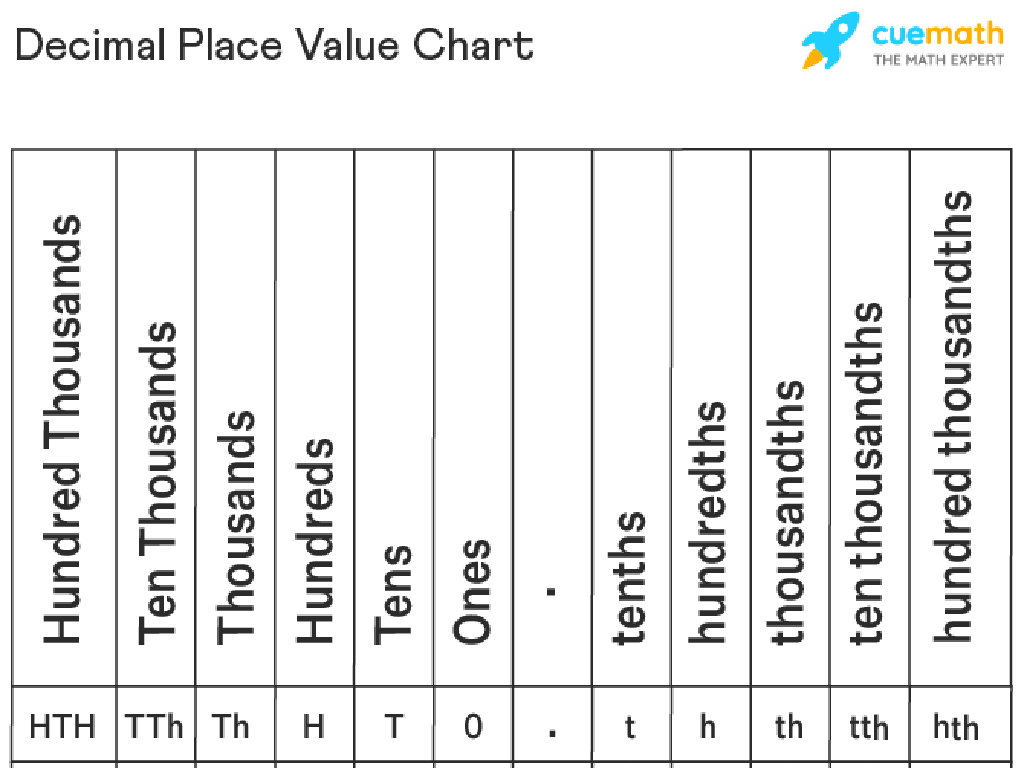Choose The Picture That Matches The Setting Or Character
Subject: Language arts
Grade: First grade
Topic: Setting And Character
Please LOG IN to download the presentation. Access is available to registered users only.
View More Content
Exploring Settings and Characters
– What is a setting?
The place where a story happens, like a forest or a school.
– What is a character?
People or animals in the story that do things.
– Settings in stories
– Characters in stories
|
This slide introduces the concepts of setting and character to first graders. Begin by asking the class what they think a setting is to gauge their prior knowledge. Explain that a setting is where the story takes place, which could be anywhere from a jungle to their own backyard. Then, ask them about characters, explaining that characters are the people, animals, or even objects in a story that have feelings, thoughts, and actions. Use pictures and storybooks as examples to help them understand. Encourage the students to think of their favorite stories and what the settings and characters are in those stories.
Understanding Story Settings
– What is a setting?
– The place where a story happens
– Examples of settings
– Like a house, school, park, or space
– Real vs. make-believe settings
– Some settings are real, some are pretend
– Settings are important
|
This slide introduces the concept of ‘setting’ in a story to first graders. Begin by explaining that a setting is the location where the story takes place, which could be anywhere from their own home or school to fantastical places like outer space. Use pictures to illustrate different settings and ask students to identify whether they are real or make-believe. Emphasize that settings are an important part of a story because they help us imagine where the characters are and what it might be like to be there. Encourage students to think of their favorite stories and the settings in them.
Understanding Characters in Stories
– Characters are story members
– Can be people, animals, objects
– Like Lightning McQueen, the talking car
– Characters have different roles
– Main character, sidekick, or background
– Heroes and villains in stories
– Good guys or bad guys in tales
|
This slide introduces the concept of characters to first graders, emphasizing that characters are an essential part of any story. They can be people, animals, or even inanimate objects like talking cars, which can be quite engaging for young students. Highlight the different roles characters can play, such as the protagonist or hero, who is often the main character, and the antagonist or villain, who opposes the hero. Use familiar examples from children’s stories or movies to illustrate these roles. Encourage students to think of their favorite characters and what role they play in their stories.
Matching Game: Character and Setting
– Let’s play a matching game!
– Observe the character I show you
– Think about what the character is like
– Look at different settings presented
– Notice the details in each picture
– Choose the setting that fits the story
– Which place looks like where the character lives or goes?
|
This interactive game is designed to help first graders understand the concept of setting in a story and how it relates to the characters. Display a character on the screen and then show various settings. Guide the students to observe the character’s appearance, actions, and any other given attributes. Then, present them with different settings and ask them to choose which one best fits the character’s story. Encourage them to explain their choice, fostering a discussion on why certain settings are more appropriate for the character. This activity will help students make connections between characters and their environments, enhancing their comprehension skills.
Matching Characters to Settings
– Meet the astronaut character
– Guess the astronaut’s story setting
– Think about where an astronaut can be
– Is it the moon, forest, or city?
– Remember, astronauts explore space!
– Choose the correct setting picture
– Pick the picture that fits best
|
This slide is designed to help first graders understand the concept of setting in a story by relating it to a character they are likely familiar with an astronaut. Start by showing a picture of an astronaut and ask the students where they think an astronaut would be in a story. Discuss the different options: the moon, the forest, or the city, and guide them to choose the setting that makes the most sense for an astronaut. The activity encourages critical thinking and understanding of the relationship between a character and the setting. For the activity, have pictures of the moon, a forest, and a city ready for students to choose from. This will be a visual aid to help them connect the character to the correct setting.
Your Turn: Match Character to Setting
– Observe the new character carefully
– Examine different settings presented
– Think about where the character belongs
– Consider the character’s clothes, actions, and items they might have
– Raise your hand to share your choice
|
This slide is an interactive class activity designed to help students understand the concept of setting in a story and how it relates to a character. Display a character on the board and provide various settings. Guide the students to look at the character’s appearance, what they might be holding, or doing, and encourage them to use those clues to decide which setting is the right one for the character’s story. Once a student has made a choice, ask them to raise their hand and explain why they think their chosen setting matches the character’s story. This activity will help students to make connections between characters and their environments, which is a key skill in understanding narratives.
Class Activity: Create and Share Your Story!
– Draw your own character
– Imagine a setting for your story
– Put your character in the setting
Does your character live in a castle, a forest, or maybe outer space?
– Share your story with the class
|
This activity is designed to spark creativity and understanding of characters and settings in a story. Provide students with paper and crayons or markers. Encourage them to think about their favorite characters from books or movies and imagine a new adventure for them. Ask them to draw this character and decide where the story is happening is it in a familiar place or somewhere completely new? Once they’ve drawn their character and setting, give them time to share their story with the class. This will help them practice their speaking skills and let them see how different each person’s imagination can be. Possible variations for different students could include drawing a setting and having another student create a character that fits, or vice versa.

